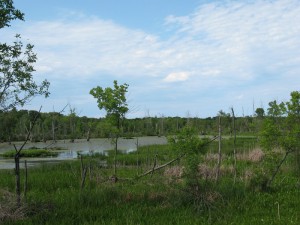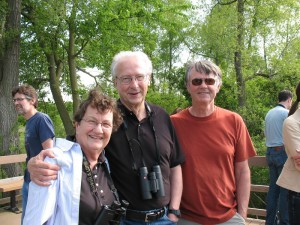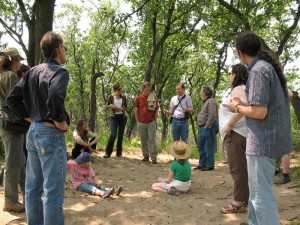Hey, RU students! Want to improve your research skills in order to find great sources for your academic work, whether in print or online? If so, your timing’s perfect, since my colleague Katy Hite, instructional librarian at RU, is running some great student workshops next week. Here’s the skinny:
Category: Books
Cosmic Outlaws: Coming of Age after the End of Nature (a call for papers)
I recently received this intriguing call for papers through email. If you’re a young and aspiring writer and have an interest in the natural environment, sustainability issues, and related subjects, check this out!
In the prescient 1988 book, The End of Nature, Bill McKibben forecast the end of a primordial relationship between humans and the untrammeled earth. Evidence abounds that our ancient connections with the home planet have irrevocably altered. What happens to individuals and societies when their most fundamental cultural, historical, and ecological bonds attenuate—or snap? How do the young, especially, cope in a baffling and mutable new world? “When the Pleiades and the wind in the grass are no longer a part of the human spirit,” wrote Henry Beston, “man becomes, as it were, a kind of cosmic outlaw. . . .” It is vital that we hear from members of the generation who have grown up on the new earth, who can express their challenges, fears, dreams, and sources of resilience for living and thriving as cosmic outlaws.
Co-editors Julie Dunlap and Susan A. Cohen are soliciting submissions for an anthology tentatively titled, “Cosmic Outlaws: Coming of Age after the End of Nature.” Submissions are invited from young writers, born in 1982 or later. We are interested in essays, short fiction, and poetry that explore themes including (but not limited to) growing up in a warming climate, accepting biodiversity decline, defining responsible consumption, understanding the relevance of wilderness, interpreting moralities of resource allocation, new views of urban design, sustainability, and environmental justice, technological optimism or pessimism, environmental heroes for the future, and sources of joy in a diminished place.
Julie Dunlap is co-editor of Companions in Wonder: Children and Adults Exploring Nature Together (MIT Press, 2012) and an award-winning author of children’s books, articles, and essays about nature, science, and environmental history. Susan A. Cohen (formerly Susan A. C. Rosen) is co-editor of Wildbranch: An Anthology of Nature, Environmental, and Place-Based Writing (University of Utah Press, 2010), editor of Shorewords: A Collection of American Women’s Coastal Writings (University of Virginia Press, 2003), professor of English at Anne Arundel Community College, and the author of numerous essays on American literature and the environment.
Please submit materials electronically (.doc or .rtf files only for essays and fiction – .pdf files will be accepted for poetry) by December 31, 2012, along with contact information and a one-paragraph author bio. We will accept essays & fiction up to 4,000 words (one per contributor) and up to three poems per person. Please submit copies of your work to both of the e-mail addresses below. If you must submit by mail, please send TWO double-spaced copies to both addresses below. We will be reading and selecting pieces in early 2013. We are happy to accept simultaneous submissions, but we ask that you please notify us if your submission is accepted elsewhere.
Send your work to:
- Julie Dunlap: juliejdunlap@earthlink.net (6371 Tinted Hill, Columbia, MD 21045)
- Susan A. Cohen: sacohen3@aacc.edu (40 Johnson Road, Pasadena, MD 21122)
Thank you. We look forward to reading your essays, stories, and poems!
City Creatures Retreat at the Indiana Dunes (Pictures and Random Thoughts)

I’ve never been invited to a writer’s retreat before (not to mention a writers and artists retreat), and despite long anticipation and careful planning for this one, I almost didn’t get to go to this one when my spouse took ill and the kids needed tending. Thank goodness for CHN retreat organizer and all-around problem-solver Gavin Van Horn’s wisdom and quick decision-making, as he called me up and said, “Bring the girls along.”
I’m glad I did, as we had a terrific time — and I’m grateful to Gavin’s wife Marcie, who generously and graciously volunteered to watch my children during the times when I was occupied with fellow participants in wonderful discussions about our forthcoming City Creatures project.
For me the retreat had a number of highlights. Some of them were formal, in the sense that they were on the planned agenda — like the splendid hike through the wetlands of the Great Calumet Marsh on Friday led by Ron and Joan Engel, who escorted us along some of their favorite biodiversity-rich trails in the Dunes back-country; the lovely reception hosted by the Engels at their beautiful home in Beverly Shores (which surely has the best home study/library I’ve ever seen); the delightful dinner at Sage restaurant in Chesterton; and the “soundwalk” excursion we took in Gary on the grounds of the Paul Douglas Environmental Learning Center at the western end of the National Lakeshore.

But the less-scripted elements of the retreat held many delights, as well. I became pals with a conservationist and writer I much admire, Stephen Packard, who rode in my car from field site to field site, and delighted my children with his funny stories, endless questions, and brilliant bird call imitations. At one point on our way to the soundwalk field trip, I deliberately got us lost (no, really!) so I could listen to the end of a story that involved “mucking about” a salt marsh on Cape Cod; the ensuing delay was worth it. I met some old friends but also made a bunch of new ones among a group of immensely talented and utterly fascinating people. And I learned a lot about what our collective project is aiming for, and had time and encouragement to think about how my small contribution fits into the bigger picture.

My two girls, Lily (age 10) and Esmé (age 5), had fun cavorting with Gavin’s 5-year-old son Hawkins, and they got a kick out of our field hikes, too. During our marsh walk, we had several great kid discoveries: Steve Sullivan found the mandible of an opossum; Steve Packard found some eggshell fragments, still soft and pliable, from a turtle; and we all admired a large beaver lodge and the abundant nearby evidence of busy-ness on the part of this intrepid wetland mammal and fellow water engineer.
On our Saturday morning hike, I was initially concerned that my chatterbox children would fill the “soundscape” with their songs, stories, and sisterly bickering and thus necessitate my hanging back from the group. Turns out I greatly underestimated them. Lily hiked ahead with the grown-ups, while Esmé and I lollygagged with the renowned naturalist and writer Joel Greenberg, who happily pointed out flowers and identified bird calls for us. Esmé got a nosebleed for no apparent reason, but rather than crying or complaining, she just asked me for tissues until it stopped, and kept trudging along behind Joel and looking at everything he noted.

The best part of that wonderful hike was when we ascended a hill about two-thirds of the way along the circuitous trail we were following, and stopped for a long listen. Here in the Dunes there’s lot of sand, of course, and this summit we were on was like a big sandbox. As we naturally formed a circle to listen, observe, and talk quietly about what we were experiencing, the girls just played quietly in the sand.
We watched them, too, and I couldn’t help but think about how our project — about connecting with nature and, more specifically, the non-human animals within the urban and suburban environment of the Chicago region — is also, ultimately, about nurturing an ethic of stewardship and love of nature in our children.

It had been way too long since I had been to the Dunes. This was a splendid excuse to return to that special landscape, and to introduce my kids to some of its treasures. It was also an inspiring way to begin our work on City Creatures.
I’m looking forward to future gatherings with these new friends and colleagues. I wonder what critters, or the leavings thereof, we’ll come across on our ensuing explorations?
New Book on the Chicago River’s Reversal
The reversal of the Chicago River — one of the great engineering projects of the late 19th century — impacted both the watersheds of the Chicago Region as well as the economy of the city and its suburbs. While that transformation and its consequences have been much discussed, a new photo book significantly adds to that documentation, as discussed by a recent article in the Chicago Sun-Times:
Beginning in 1894, photographers set out to document the mammoth project. Some of those 22,000 images are now featured in the recently released book by Richard Cahan and Michael Williams, “The Lost Panoramas; When Chicago Changed its River and the Land Beyond.” Few of the images have ever been seen before, the authors say. The negatives were recently discovered by accident in a basement of the James C. Kirie Water Reclamation Plant in Des Plaines.
 “Nearly every photo is panoramic in nature — wide-angle, unobstructed views of a world that no longer exists,” the authors write.
“Nearly every photo is panoramic in nature — wide-angle, unobstructed views of a world that no longer exists,” the authors write.
The book, published by CityFiles Press, retails for $45. Cahan is a former Chicago Sun-Times picture editor.
